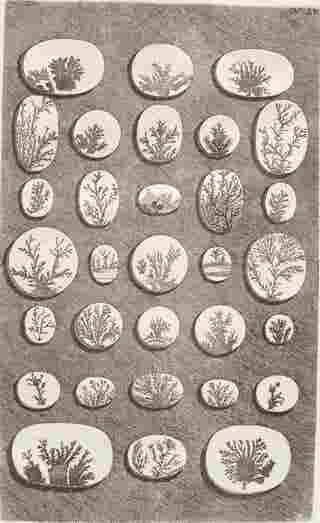Sarah Anne Drake
Sarah Anne Drake was born on July 24, 1803 in Skeyton, Norfolk, England. Her childhood friendship with Anne Lindley and her close relationship to the Lindley family would lead her to become one of the most accomplished botanical artists of all time. As a young woman, Drake studied in Paris, where it is likely she practiced activities expected of her gender, including painting and drawing.
While residing in Acton Green at the home of John and Sarah Lindley, she trained to specialize as a botanical artist. Lindley was a busy man - first Professor of Botany at the University of London, Assistant Secretary to the Royal Horticultural Society, author for the Botanical Register, Ladies' Botany and several books on orchids, as well as a talented botanical artist. Because of his passion for his subject and his tremendous influence, he can be credited with shaping the science of botany, but he also took the lead in a movement to divide botanical studies into gender specific categories, identifying certain practices as those acceptable for women such as collecting, painting, and tutoring of children, and reserving true research as masculine science.
On April 30, 1829, in his inaugural speech as Professor of Botany, he stated “It has been very much the fashion of late years, in this country, to undervalue the importance of this science, and to consider it an amusement for ladies rather than an occupation for the serious thoughts of men,” establishing a divisive agenda that was felt long afterwards.
When Lindley found that his other responsibilities consumed his time, he turned to Drake as a replacement illustrator for his publications. As his illustrator, she drew from living plants and sketches that had been sent to Lindley from such places as Brazil, British Guinea, Australia and China. Her first illustrations appeared in Plantae Asiaticae Rariores, published in 1830. Her work for Lindley is included in the publications Edward’s Botanical Register, Ladies’ Botany, and the largest lithographic book of its day, James Bateman's Orchidaceae of Mexico and Guatemala.
The exceptional quality of her work gave her wide recognition. Plates signed “Drawn from Nature and on Stone by Miss Drake” or “Miss Drake del.” are found in Lindley's Sertum Orchidaceum: A Wreath of the Most Beautiful Orchidaceous Flowers and The Botany of the Voyage of H.M.S. Sulphur by George Bentham. In acknowledgement of her contribution to his work, Lindley named the genus Drakea for her, which today contains three species – D. elastica, D. glyptodon, and D. jeanensis.
Drake was extremely prolific, creating well over 1000 illustrations for the Botanical Register alone. Her career ended when the Botanical Register ceased publication in 1847. She returned to Norfolk to live with her uncle, Daniel Drake. Five years later, she married John Sutton Hastings, a wealthy farmer. She died from diabetes on July 9, 1857.
- NVG

Dielytra spectabilis. Image source: Fortune. “Dielytra spectabilis, a New Plant Introduced from China.” Journal of the Royal Horticultural Society. Vol. 2, part 3, 1847.
From the Missouri Botanical Garden Library. View Source »

